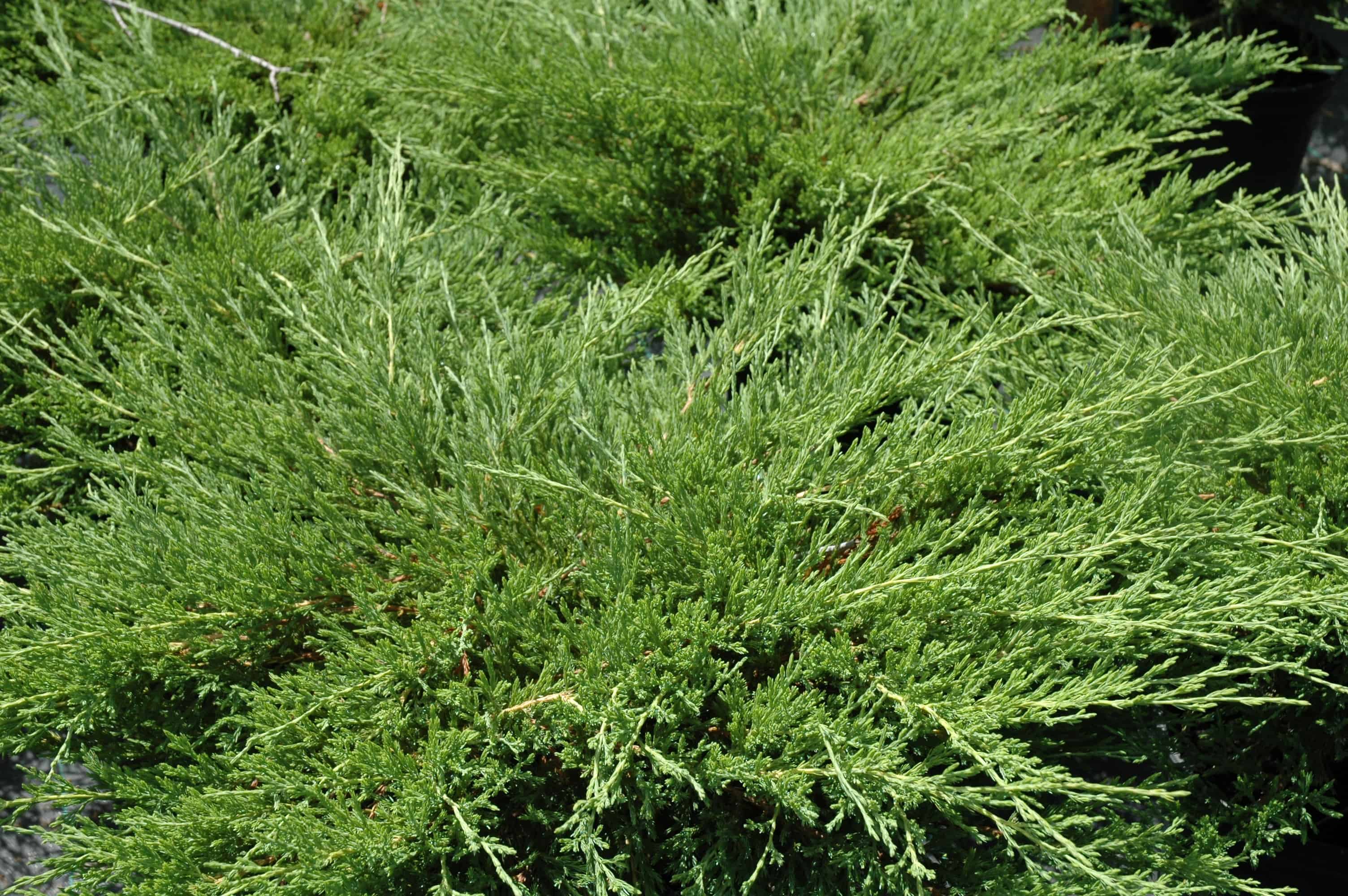

Juniperus horizontalis, commonly called creeping juniper, is a procumbent evergreen shrub that is native to Alaska, Canada, and the northern U.S. from New England to New York to the Great Lakes, Wyoming, and Montana. Distribution in the northern U.S. is somewhat spotty. It is typically found growing in rocky or sandy soils including rock outcroppings, stony slopes, coastal cliffs, prairies, sand dunes, and stream banks. It forms a low ground cover that generally rises to 6-18” tall but spreads by long trailing branches with abundant short branchlets to form an often-dense, 4-10’ wide mat. Foliage is primarily scale-like (adult) with some awl/needle-like (juvenile) needles appearing usually in opposite pairs. Foliage is typically green to blue-green during the growing season but often acquires purple tones in winter. Fleshy seed cones (dark blue berries) generally mature in two years, but are often absent on cultivated plants.
| Requirement | |
|---|---|
| Hardiness | 3,4,5,6 |
| Heat Zones | 3,4,5,6,7,8,9 |
| Climate Zones | 3, 4, 5, 6, 7, 8, 9 |
| Plant Type | Shrubs |
| Plant Family | Cupressaceae |
| Exposure | Full Sun, Partial Sun |
| Season of Interest | Spring, Summer, Fall, Winter, Early Spring, Mid Spring, Late Spring, Early Summer, Mid Summer, Late Summer |
| Height | 1' - 2' |
| Spread | 4' - 5', 8' - 9', 9' - 10' |
| Water Needs | Low, Average |
| Maintenance | Low, Average |
| Soil Type | Loam, Acid |
| Characteristics | Deer Tolerant, Drought Tolerant |
| Garden Styles | City and Courtyard, Coastal Garden, Formal Garden, Gravel and Rock Garden |
| Planting Place | Banks and Slopes |